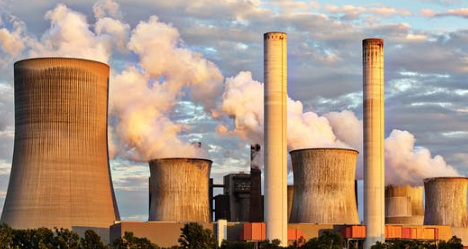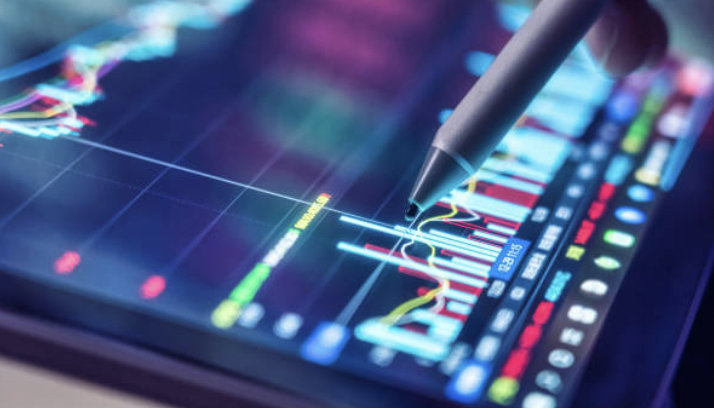
Haiden Holmes
Apr 18, 2022 17:37

The globe will need to increase its food supply during the next three decades.
Currently, farmable land might shrink 50 percent by 2050, making an already challenging issue considerably tougher.
One option to tackle the possible food-shortage catastrophe is vertical farming. As this notion develops acceptance, farming should start to appear more and more appealing.
Vertical farming is a method of cultivating produce at stacked levels inside. Vertical farming was first suggested in 1999 by Dickson Despommier, a Columbia University professor. Vertical farming is a contemporary agricultural method that vertically involves farming in stacked layers, and it entails the cultivation of crops in a controlled environment. Vertical farming is often carried out inside using such methods as aeroponics, hydroponics, or aquaponics. Additionally, it uses high-capacity LED lighting and fertigation systems with little human interaction.
Automation of sowing, transplanting, and harvesting is critical for vertical farming to reduce operating costs and increase income. Additionally, with automation, this contemporary farming system enables you to grow any crop, and vertical farming enables crops to be grown year-round, regardless of the weather.
Although the vertical farming industry is still in its infancy, proponents think it has the potential to capture significant market share over the next decade. Venture capitalists invested over $900 million in vertical farming firms in 2020 alone, more than double the amount invested in 2019. In the United States, there are now over 2,300 hydroponic farms, and however, they account for a negligible portion of the produce market.
Although vertical farming is a relatively new concept around the globe, it is gaining traction. Following the first commercial vertical farm launch in 2012 in Singapore by Sky Greens Farms, a slew of others entered the market.
So what's the big deal about vertical farming stocks? How is it different from traditional farming methods? The following are the primary vertical farming benefits, as well as why vertical farming is attracting investment interest:
Conventional agriculture consumes 50% of the Earth's arable area and 70% of overall freshwater use.
Vertical farming uses much less area since it expands vertically when the horizontal extension of land is required to boost productivity in land-based farming.
Additionally, the hydroponics method cycles the same water again, using 90-95 percent less water than traditional agriculture.
As a result, vertical agriculture is more efficient than conventional farming, and land and water utilization have become far more efficient.
Because vertical farming takes place inside a controlled environment, illness and insect infestation are uncommon. This eliminates the need for large amounts of pesticides to sustain healthy crops.

Additionally, fertilizer is used to its full capacity since vertical farming does not face the challenges associated with soil-based agriculture, such as leaching or wash-off.
Vertical farming plants may be readily grown near urban areas because of their low land requirements, and this eliminates the need for products to be transported from far farms to the city.
As a result, transportation costs may be significantly reduced.
Additionally, a significant proportion of food is lost on the road due to poor packing and a great distance from the market, which may minimize vertical farming.
Chemicals used in agriculture, such as fertilizers and pesticides, linger on the soil as a residue for an extended period, polluting both the soil and the water. Additionally, gases such as methane are created on agricultural land, a significant contributor to climate change.
Along with reduced insect and pest infestation and increased responsiveness to applied feed and hormones, the quality and quantity of food produced will undoubtedly be superior to traditional farming.
Vertical farming is a more effective technique of agriculture that not only saves water and land and improves the quality and quantity of our crops.
While conventional agriculture already incorporates some automation, vertical farming enables further automation. Due to the reduced size of the indoor vertical farming facilities, numerous farming operations, such as:
Sowing seeds
Crop transfer
Harvesting
Watering and illumination
Fertilization and pesticide usage
Along with the growing automation enabled by vertical farming, using AI systems to monitor crops and modify farming practices for each crop will be one of the most disruptive innovations in the agricultural industry.
Vertical indoor farming enables the broad use of artificial intelligence and digital technologies, making it simple to produce the greatest crops at the lowest possible cost by monitoring and managing every stage of the process from the time the seeds are planted in the soil to harvesting.
While vertical farming is not a new idea, it has gained popularity in recent years, and it is often used in conjunction with indoor farming or urban farming.
Numerous vertical farming firms have sprung up in response to the worldwide push for sustainability and the rising problem of food insecurity. Typically, startups need investment, and as a promising technology with a social effect, it has attracted attention from investors worldwide.
Investing in vertical farming is a no-brainer. When you examine the facts on the world's population, the figures are astounding. The United Nations estimates that the world's population will grow a staggering 9.7 billion people by 2050.
9.7 billion people will need food, and if current food production systems are not improved, widespread starvation is a probable possibility. With rising urbanization and a reduction in conventional farming, it is evident that alternative food production technologies are urgently needed. Vertical farming seems to have the ability to assist in meeting future food demands.
Because vertical farming is still in its infancy, there are complications. The primary disadvantage is, of course, the tremendous expense of establishing such a farm.
Ultimately, solving these issues and making this notion more cost-efficient will need a significant initial investment, and this is why there are several investment possibilities in this sector. Like Bayer and SoftBank, numerous large corporations have invested extensively in vertical farming, indicating its potential.
The primary driver of impact investors is the social effect of such projects. Vertical farming is sustainable, but it also contributes to the resolution of a significant societal problem. Additionally, the vertical farming industry is expected to grow at greater than 24 percent over the next five years.
Investing in vertical farming is not as flexible as it once was since the industry is still in its infancy. Most firms that make headlines and raise millions in seed financing do it with venture capital funding.
Institutional investors and multinational businesses are also significantly invested in this field. Generally, when companies and venture capitalists invest, the general public does as well.
There are still opportunities to invest directly or indirectly in vertical farming.
To be sure, one way to invest in vertical farming is to do it yourself. You may establish your own vertical farm with the correct equipment and a little room.
It becomes more of a business than an investment if you do it yourself. However, considering the number of vertical farms that have begun in this manner, which is to say it does not have the potential to grow to be large?
Perhaps you have the potential to be the next great agri-tech business to raise millions of dollars in investment.
Establishing a vertical farm does need significant upfront cost, particularly if done on a large scale. However, there are instances of individuals who began from the beginning.
Inform began in a modest flat in Berlin. The startup's three founders started producing spinach, herbs, and lettuce in their modest flat.
They raised an additional $170 million, and their products will now be grown directly in the aisles of supermarkets across Europe and North America.
Obviously, you'll need a dedicated place in your house or somewhere and a substantial amount of equipment.
There are other options if you're ready to invest your money without completing the job.
If you are a high-net-worth individual or institutional investor, you may choose to invest in innovative vertical farming businesses. Due to the constant emergence of new companies with unique concepts, there may be a plethora of fascinating investment options available to you.
With large firms betting on this new technology, we should expect to see an increase in startup activity. And it is not restricted to the United States; this approach is gaining traction in other areas, particularly Europe.
You may keep an eye out for such new businesses' funding rounds. This allows you to invest directly in vertical farming while diversifying your impact investing portfolio.

In the context of impact investing, you may also invest via businesses that invest only in social and economic interests.
There is always a danger associated with investing, as there is with any kind of investment. Therefore, you should do a comprehensive analysis of the firm, its technology, and its business plan prior to investing.
The simplest approach to investing in vertical farming is to purchase shares in the large organizations that are pioneering this new kind of agriculture.
There are not many vertical farming firms registered on the stock market at the moment. However, it won't be long until regular investors also grab a piece of the pie.
One firm just completed its first public offering and is now listed on NASDAQ. Others are also expected to be listed shortly since significant institutional investors back them.
Another approach to investing in vertical farming is via the purchase of stocks of firms involved.
Equipment manufacturers have the potential to expand significantly in the future. The businesses that develop the technology employed by these new enterprises already have publicly traded shares.
Identifying such businesses might be challenging, but they are absolutely worth investigating. Vertical farms, as specialists grow, will expand and become profitable, as will the businesses associated with this industry.
Spring Valley Acquisition is a SPAC with a sustainability emphasis. It agreed to merge with AeroFarms, a prominent indoor farming startup, in March 2021. It invented a vertical farming system that consumes 95% less water and produces 390 times more produce per square foot than standard field farming without the usage of pesticides. Its technique enables year-round cultivation and may potentially provide a solution to the difficulties of population expansion, water shortages, and dwindling arable area for agriculture.
Over 550 types of products have been grown by the firm, including leafy greens, fruits, and vegetables. AeroFarms supplies leafy greens to the Northeast retail market, including Amazon (NASDAQ: AMZN) subsidiary Whole Foods Market. The company's goods consistently outperform other locally produced leafy greens in terms of quality and taste.
Spring Valley's business merger with AeroFarms will provide cash for the vertical farming company's expansion. It will fund the building of more farms dedicated to growing leafy greens and other disruptive product categories such as strawberries. The firm thinks that increasing its farming capacity would enhance its efficiency, resulting in cost savings and increased profitability.
APPH stock was recently floated through a SPAC and went as high as $42.90 in early February. It has subsequently trended downward and is now trading at $15.18. With a market value of $1.38 billion, the company seems to be desirable among agricultural stocks.
Appharvest operates large-scale, climate-controlled indoor farms. Currently, the firm operates a 60-acre complex, one of the biggest indoor farms in the United States.
Additionally, Appharvest has a development pipeline that will total 525 acres by 2025. (Page 38). Once these facilities are operating, income is projected to soar significantly. The corporation anticipates generating revenue in the current fiscal year.
In the United States and Canada, Hydrofarm manufactures equipment and supplies for the indoor farming market, including high-intensity grow lights and temperature control systems. The firm has been in business for more than 40 years, supplying wholesale customers such as department retailers. Hydrofarm distributes its products via six distribution facilities in the United States and two in Canada.

Due to the fact that the company's goods may also be used to grow marijuana, the stock has been a popular method to speculate on marijuana legalization. Therefore, if you're trying to invest just in lettuce production, Hydrofarm may not be the greatest pure-play. However, unlike many other vertical farming firms, Hydrofarm generates revenue. For 2021, the business anticipates net sales of $470-$490 million and EBITDA of $47-53 million.
CubicFarm Systems notes that 1.3 billion tons of produce rot during transportation each year. We are exporting food over huge distances, but this is no longer essential with contemporary technologies. CubicFarm manufactures and sells automated growth systems, and they are used to propagate fresh produce, nutrient-dense animal feed, and plant species.
Additionally, CubicFarm utilizes hydroponic technology. It is capable of supplying comprehensive indoor farming systems. Additionally, the organization employs vertical farm advisors, and they assist in doing research and developing solutions for customers. Additionally, CubicFarm is led by an experienced executive team.
If you choose to invest in CubicFarm shares, you will be investing in a tiny Canadian business. Its headquarters are in British Columbia, and the company's stock is listed on the Toronto Stock Exchange (TSX). However, you may also purchase shares in the United States over-the-counter (OTC) marketplaces.
Village Farms International (NASDAQ: VFF) is a Canada-based hydroponic technology firm. Hydroponic farmers grow plants year-round inside using nutrient-rich, sterilized water and high-tech lighting.
Hydroponic produce has grown in popularity in recent years because of its portability, cheap cost, and little environmental effect.
Notably, the firm has its own marijuana brands and is a low-cost cannabis grower in Canada. As a result, investing in the company provides exposure to the cannabis industry, which is seeing rapid expansion. As a result, investing in this stock essentially gives you two for the price of one.
Bowery Farming prides itself on serving non-GMO, pesticide-free produce. It is not only an innovative agritech firm; it is one that goes above and beyond by assuring the usage of non-modified natural seeds.
Since its inception in 2015, the firm has raised approximately $140 million. Their goods are already available on the shelves of stores such as Foragers and Whole Foods. As a result, you may anticipate it becoming even larger in the future.
Additionally, it is targeting the digital market by guaranteeing that fresh produce is delivered directly to consumers' homes. That might be a watershed moment, considering how drastically the situation has altered as a result of the Covid-19 outbreak.
Their rapid 'harvest to shelf' concept benefits metropolitan areas by allowing residents to enjoy fresh, organic produce within days.
There is a low-angle view of vertical farming shelves and green-leaved plants in an indoor garden area.
The GWPD stock is one of the riskiest agricultural stocks on our list, and it now has a market capitalization of roughly $70 million. However, in the event of favorable industry tailwinds, Who may explore exposure to this name.
GP Solutions is a producer of "specialty leaf crops and herbs growing systems." It sells a variety of goods, including "hydroponic-based pod[s]" and soilless growing media.
GP and Advanced Container Technologies (OTCMKTS: ACTX) struck a deal in late October to "sell and distribute GP's products throughout the United States and its territories." As the company's product exposure improves due to these transactions, revenue is anticipated to trend upward.
Vertical farming stocks are projected to become a major agricultural investment trend in the next years. Although the industry is still in its infancy, many corporations are investing heavily in this field. Investors should monitor these stocks closely since they are anticipated to grow swiftly and ultimately become massive agricultural conglomerates.

Apr 18, 2022 17:14

Apr 19, 2022 16:43